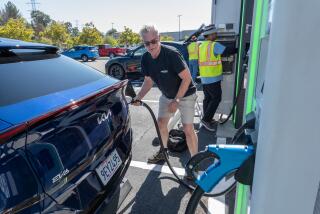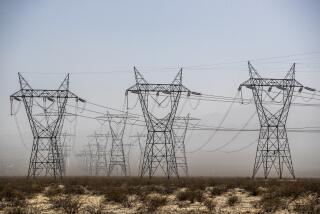Here’s how California can keep the lights on while meeting its clean energy goals
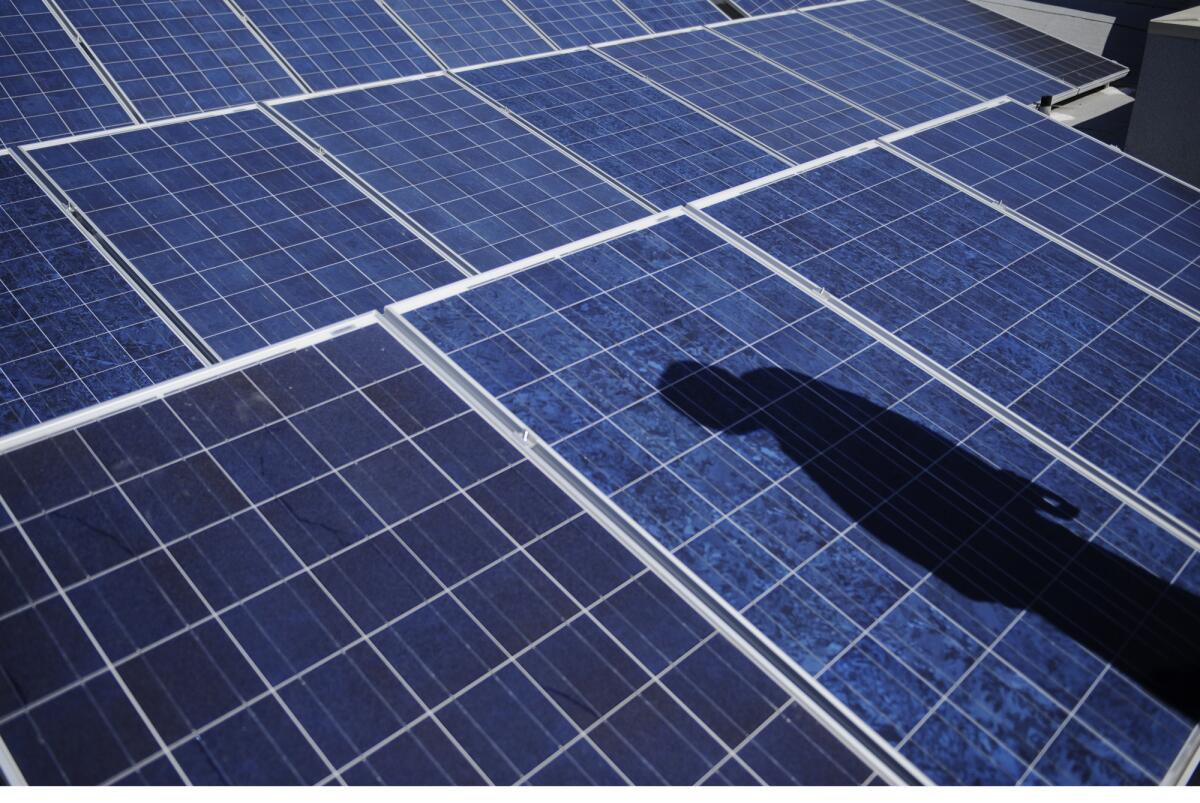
Even before California’s rolling power outages threatened to become a full-on crisis in the last few days, long-standing critics of the state’s aggressive push into renewable energy were sharpening their knives.
Solar power, they said, had failed California, never mind that state officials never expected the sun to keep shining into the night.
The Wall Street Journal’s famously conservative editorial board was particularly gleeful Sunday, calling brief blackouts the previous two evenings “a warning to the rest of America about the risks of Green New Deal policies.” President Trump echoed the theme Tuesday, tweeting that the “Bernie/Biden/AOC Green New Deal plan would take California’s failed policies to every American!”
The president of California’s power grid operator, Stephen Berberich, dismissed those types of criticisms, saying renewable energy wasn’t to blame for the outages. The real problem, he said, was a statewide failure to assemble the right mix of energy sources for the completely predictable situation of electricity demand staying high after the sun goes down.
Your guide to our clean energy future
Get our Boiling Point newsletter for the latest on the power sector, water wars and more — and what they mean for California.
You may occasionally receive promotional content from the Los Angeles Times.
Although the exact causes of the blackouts are still up for debate — some critics have blamed the California Independent System Operator for poor management of energy markets — there’s no question that lining up enough power on hot summer evenings is one of the main challenges California must confront as it continues to phase out fossil fuels.
Fortunately, experts say, there are many possible clean energy solutions.
Nearly every approach has its drawbacks and detractors. But they all have their strengths too. Here are eight ideas for how the Golden State can keep the lights on while continuing to reduce planet-warming emissions.Build lots of batteries
Lithium-ion batteries, which typically store about four hours’ worth of power, appear to be following the same rapidly declining cost curve as solar panels did over the last decade. Batteries can be charged with solar energy during the middle of the day, when California frequently generates more electricity than it can use, then distribute that stored power after the sun goes down.
Last year, the California Public Utilities Commission ordered utilities to add 3,300 megawatts of new power capacity, most of which is expected to be big batteries connected to the power grid. But that’s a small fraction of what the state may ultimately need.
An 2019 analysis from Lawrence Berkeley National Laboratory found California could get 90% of its electricity from climate-friendly resources by 2030 while reducing energy prices, even if the costs of solar power, wind power and batteries don’t decline as quickly as they have in recent years. Doing so would require about 25,000 megawatts of batteries, the analysis estimated.
“Storage is a total game-changer,” said Sonia Aggarwal, vice president of the research firm Energy Innovation.

Build lots of solar and wind too
Batteries are useful, but they don’t create energy; they only shift the time during which it’s available. That’s why many experts say California should go on a solar and wind plant building spree.
“Batteries won’t fix this alone,” Berberich, president of the Independent System Operator, said Monday. “In fact, solar and other renewables will have to be overbuilt to both charge the batteries and serve the load at the same time.”
This strategy could also help keep the lights on during cloudy or overcast days because an abundance of solar farms and rooftop panels can squeeze more juice out of the limited sunlight.
It helps that solar has gotten so cheap. In fact, a 2019 study found that intentionally “overbuilding” the solar fleet — and accepting it’ll sometimes need to be dialed down in the absence of sufficient demand — may be the best way to keep electricity prices low on a power grid dominated by renewable energy.Go big on rooftop solar (and batteries)
California celebrated a milestone last year with the completion of its 1 millionth small solar system, primarily rooftop installations. Now clean energy advocates want the state to pursue 1 million small batteries.
The end goal is for networks of far-flung solar panels and storage systems to operate as “virtual power plants” that can help electric utilities meet demand, including during heat waves. Homes and businesses would sign up for programs in which they’d agree to occasionally discharge their batteries in unison when called upon, in exchange for financial compensation.
“It takes the Flex Alert and puts it on speed,” said Bernadette Del Chiaro, executive director of the California Solar and Storage Assn., a trade group. “It’s not just, ‘Turn off your lights and set your thermostat to 78.’ It’s do those things and give us 5 kilowatt-hours from your battery in your garage. And we’ll pay you for it.”
Several government-run energy providers in the San Francisco Bay Area have plans for one of the largest virtual power plants yet. But Del Chiaro said big utility companies and state regulators, including the Public Utilities Commission and the Independent System Operator, are biased toward traditional power plants and have mostly failed to embrace the concept.
Your support helps us deliver the news that matters most. Subscribe to the Los Angeles Times.
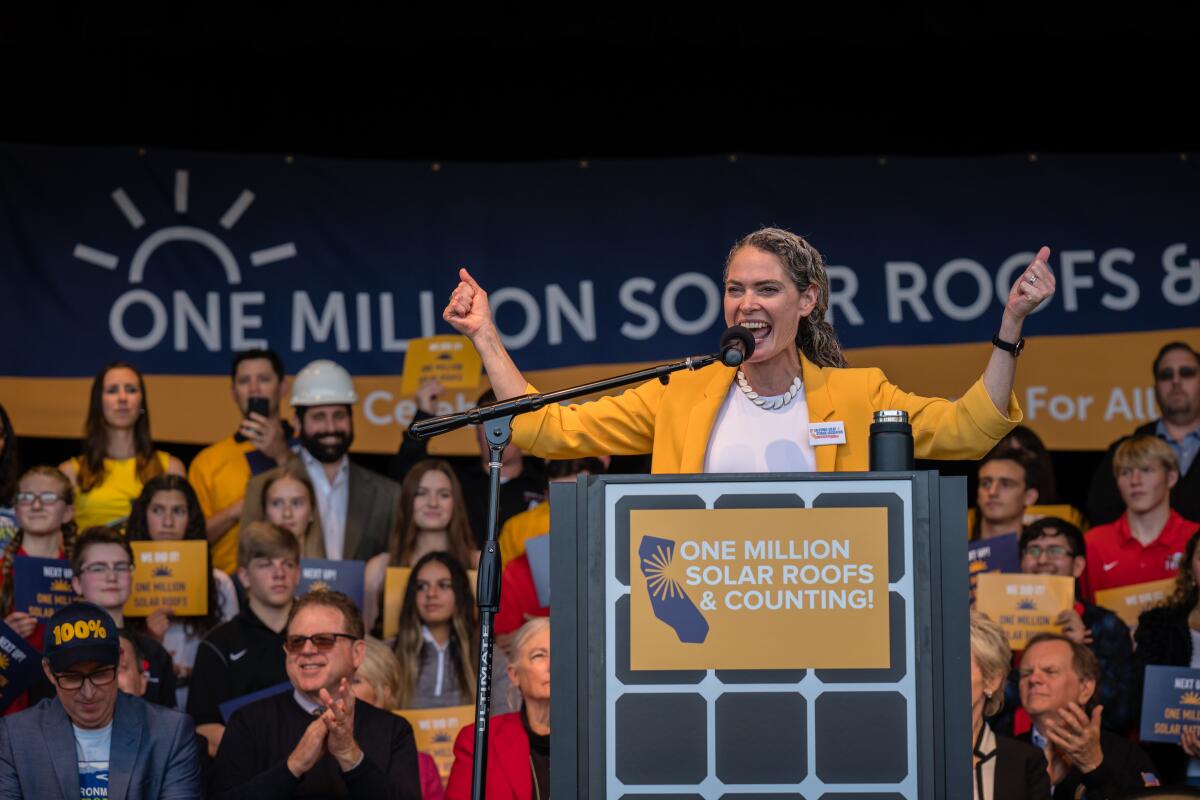
People power
To understand the power of asking people to use less electricity, look no further than Monday. Grid officials warned that millions of Californians could lose power that evening, far worse than what had happened over the weekend. But the foretold blackouts never materialized.
It helped that temperatures dropped more than expected. But households also appear to have offered a robust response to statewide Flex Alerts. David Olsen, who chairs the Independent System Operator’s board of governors, pointed to a chart showing that electricity demand on the state’s main power grid Monday afternoon and evening was significantly lower than officials had forecast it would be.
“On low-carbon grids, demand will be as important as supply. We’re going to have to be able to manage demand, flexibly, to match the constantly changing output of wind and solar,” Olsen said in an email.
Going forward, experts say, it will be crucial to expand “demand response” programs that automate energy-saving measures and pay people to conserve, rather than depending on frantic pleas to the public. With the right technology, grid managers could cut huge amounts of demand during peak periods by directing pool pumps, electric vehicles, cooling systems and other devices to draw power from the grid — and potentially contribute power to the grid — at different times of day.Expand the power grid
When Jerry Brown was governor, in 2018, he cared so much about an expanded power grid that he reportedly threatened to veto California’s 100% clean energy legislation if he didn’t get it. The idea is for California to link its electricity system with those of other western states, creating a coordinated system under a single governing body.
Critics, including the Sierra Club and labor unions, have argued the “big grid” concept would give red-state politicians too much sway over California’s energy supply and could lead to jobs building solar and wind farms getting shipped out of state.
Supporters counter that a coordinated regional grid would reduce the costs of phasing out fossil fuels, partly by giving California easier access to powerful winds that blow across the plains of New Mexico and Wyoming. A single western grid might also make it easier for power managers across the region to coordinate supplies during a heat wave like the one this week, without having to scramble to find available resources.
“We shouldn’t need to scramble,” said Ralph Cavanagh, co-director of the energy program at the Natural Resources Defense Council. “The scramble is itself evidence that we continue to suffer from an excessively fragmented system of grid management.”Keep Diablo Canyon
In 2024, Pacific Gas & Electric plans to begin shutting down Diablo Canyon, the state’s last nuclear power plant, along the coast near San Luis Obispo. The Public Utilities Commission approved that plan in 2018, satisfying environmental groups and wary Californians who see nuclear as an inherently dangerous technology, especially after a high-profile meltdown in Japan a decade ago.
But Diablo Canyon’s supporters point out the facility still generates nearly 10% of the state’s electricity — and that power is carbon-free, meaning it doesn’t contribute to climate change. Although it may be possible to replace that power with other climate-friendly resources, as of yet there’s no plan for doing so.
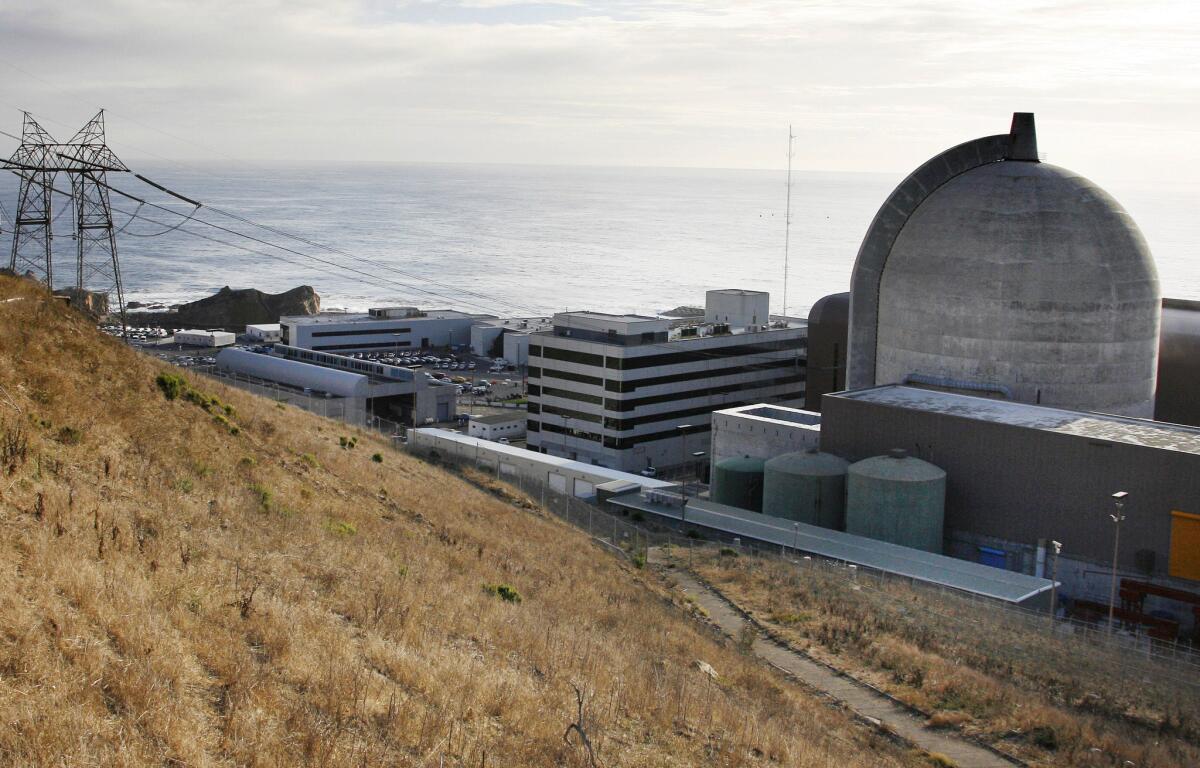
Assemblyman Jordan Cunningham (R-Templeton), whose district includes San Luis Obispo, has a bill pending in the Legislature that would require state officials to count nuclear toward California’s target of 60% renewable electricity by 2030. Right now, nuclear is excluded from the mandate. Cunningham is hopeful the legislation would be an incentive for PG&E to change course.
“We’re experiencing [these blackouts] with Diablo Canyon still operational, producing 10% of our state’s electricity,” Cunningham said. “I can’t imagine what kind of situation we’re going to be in if there’s a heat wave in 2025 when Diablo is offline.”Geothermal and offshore wind
There are two renewable energy technologies that have mostly gotten short shrift in California.
One is geothermal power — energy generated by tapping subterranean heat. The state already gets about 5% of its electricity from geothermal plants, but there hasn’t been a new facility built in nearly a decade, because of high upfront costs compared with solar and wind. But unlike solar and wind farms, geothermal plants can generate carbon-free electricity around the clock. Some energy providers have been giving the technology another look.
The other is offshore wind power. There are now two wind farms off the Atlantic Coast of the United States, but none out west, in part because of concerns raised by the military that offshore turbines could interfere with training exercises.
If those concerns can be resolved, offshore wind facilities could help California keep the lights on because the wind blows more consistently over the ocean than it does over land — including in the evening, and after the sun goes down.
“Resource diversity is good,” said Nancy Rader, executive director of the California Wind Energy Assn., an industry trade group. “Solar and wind together are much more reliable than a solar-heavy portfolio.”Long-duration storage
Batteries aren’t the only way to store energy. Companies have developed technologies to store larger amounts of electricity for longer periods of time, including “pumped storage” systems that can pump water uphill when excess solar or wind energy is available, then let it flow downhill through turbines during high-demand periods. There are also “compressed air” storage systems that use surplus power to pack air into underground caverns, then release the air to turn turbines when electricity is needed.
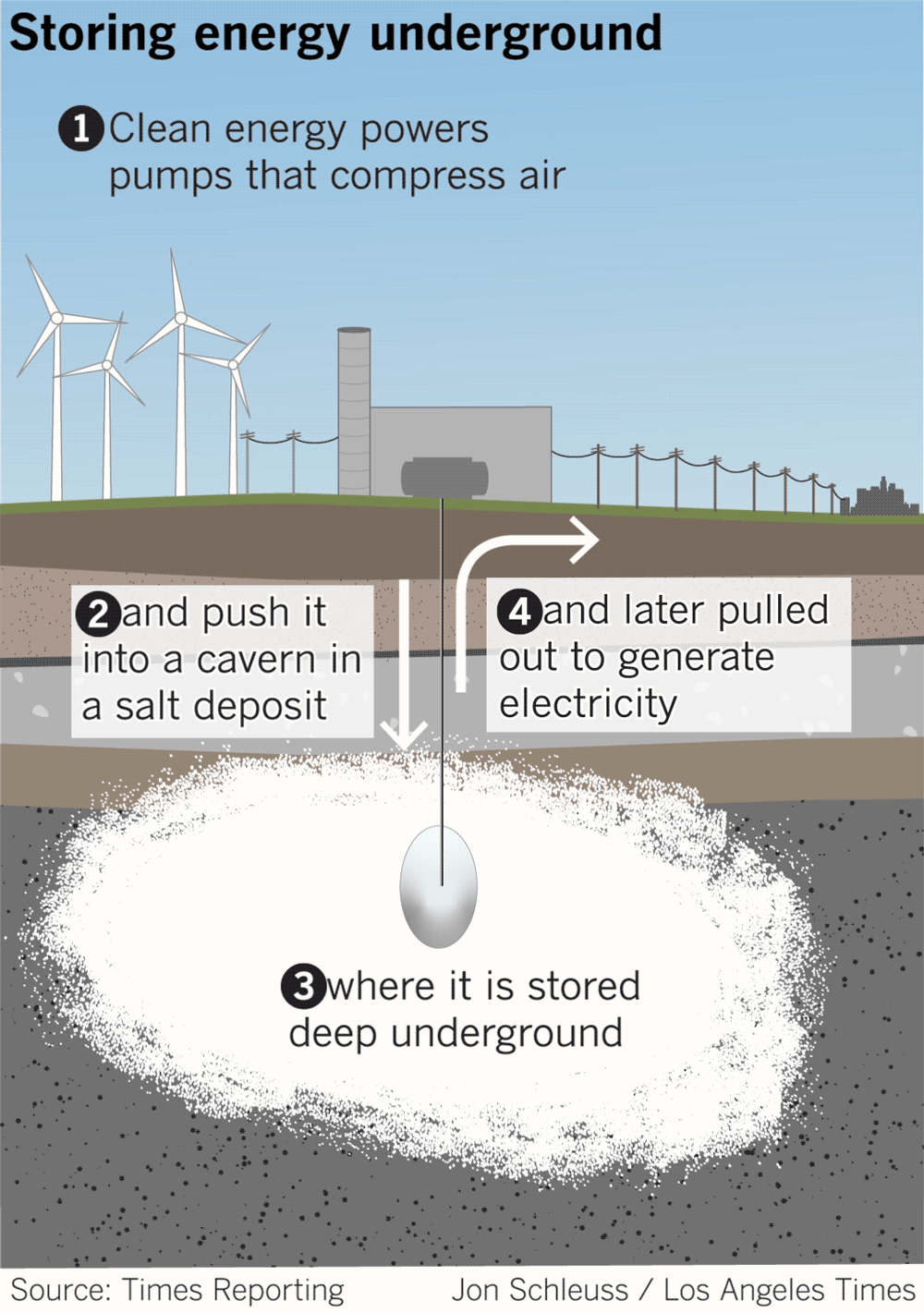
Pumped storage projects can be controversial, especially near national parks and other protected areas, because they use large amounts of land and water. And compressed air systems typically require unique geology that is only found in certain places.
But both technologies offer large amounts of storage that could help sustain the grid through sweltering evenings, said Julia Prochnik, executive director of the Long Duration Energy Storage Assn. of California, a trade group. And there are other, more nascent long-duration storage technologies with minimal environmental footprints, such as flow batteries.
“We could have definitely delayed or shortened these blackouts,” Prochnik said.
What comes next
It’s a bitter irony of the climate crisis that rising temperatures are already raising demand for air conditioning, meaning even more clean energy resources will be needed to meet electricity demand. An analysis released last week by the nonprofit research group Climate Central projected that air conditioning use by U.S. homes will increase by 59% over the next 30 years.
And it’s not just California dealing with this challenge. Across the country, policymakers and activists working on climate change are focused on achieving net-zero greenhouse gas emissions by the middle of the century, which scientists say is needed to avoid the worst effects of global warming. Joe Biden says if he’s elected president, he would support a national goal of 100% climate-friendly electricity by 2035.
Whether Biden’s ambition is achievable may depend in great part on whether California, long a leader in the clean energy arena, takes the lead. But Gov. Gavin Newsom has been mostly focused on the immediate fallout from the COVID-19 pandemic in recent months, and critics say he’s allowed the state’s response to the climate crisis to take a backseat.
“We are continuing to focus on energy conservation during peak hours through this unprecedented heat wave, while at the same time looking into the causes that led to unacceptable rolling blackouts,” Vicky Waters, a spokeswoman for the governor, said in an email. “The administration is already working on longer-term solutions to make California’s energy system more resilient and reliable as the state shifts away from fossil fuel reliance to become carbon neutral in the next 25 years.”

